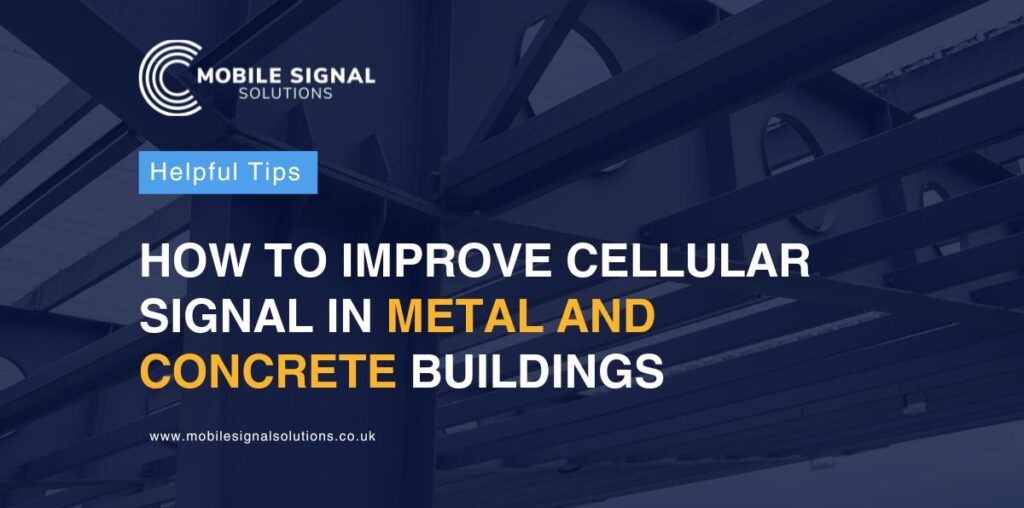If you’re struggling with cellular signal inside your metal or concrete building, we’re going to discuss some of the reasons this might be happening and how to improve it. The outer shell is acting as a shield which is blocking electromagnetic fields, this effect is known as a Faraday cage. It was named after Michael Faraday who in 1836 created the first Faraday cage with metal mesh. This effect of metal, and even concrete substrates, blocking signals was named a Faraday cage after him. This Faraday cage effect inside buildings, blocking mobile and other data signals, is becoming common as the building construction industry moves to improve BER rating for buildings across the UK and the world.
This effect, of blocking out electromagnetic signal, includes the cellular signals we take for granted and are unable to live or run business without these days. The higher the wavelength the more likely it is to be blocked, so for example 5G across 2600MHz is extremely likely to be blocked, while 4G on 7800MHz might have some small areas of signal, near windows and openings.
The only way to improve the signal is to build a new signal inside the Faraday cage, which will need a physical connection to the outside signal to be able to broadcast. So in essence you will need an outside aerial that sits outside the metal or concrete that is causing the Faraday shield. You would then need a physical cable to run from that to inside the shield blocking the signal, once inside, if the signal is strong enough, you will just need to connect an antenna inside which will broadcast the signal, if the signal is weak or you have a larger area to cover you will need a mobile signal booster to amplify the signal and broadcast it inside the Faraday cage area.
Two common areas that are affected by metal and concrete and can use a mobile signal booster to improve are below;
- Mobile Signal Booster for Lifts: The classic metal lift will block all signals from entering the lift itself. As the lift moves, the placing of an antenna inside the lift itself is difficult as the cable would need to be very flexible and thin to be able to move up and down smoothly with the lift. This is why the lifts themselves have an emergency response button that is connected by a light physical cable to a box in the lift shaft itself.
The box itself will then have a sim card, which in turns takes signal from inside the lift shaft. To ensure there is mobile signal in the lift shart the lift shaft itself will then have an AP (access point) connected, that feeds signal from a mobile signal booster inside the building. The emergency calls from the lift can then be made. To find out more about signal boosters for use in emergency lifts feel free to read our case study for Schindler lifts.
- Concrete Modular buildings and why they need mobile signal boosters:
These types of mass concrete modular apartment blocks and hotels are becoming more and more common. As the shell is being built, the tradesmen inside find that the ability to make and receive calls slowly deteriorates, until a time comes when it’s totally impossible to make and receive calls. The tenants that then move into the building will run into issues where they have no mobile reception.You can improve cellular signal by installing commercial signal boosters into these buildings which will provide everyone’s apartment and or the communal areas with strong mobile signals for voice and data.
In general the only way to improve signal is to bypass the materials causing the Faraday cage and install a mobile signal booster to the interior of the metal or concrete building in order to achieve perfect indoor coverage.

